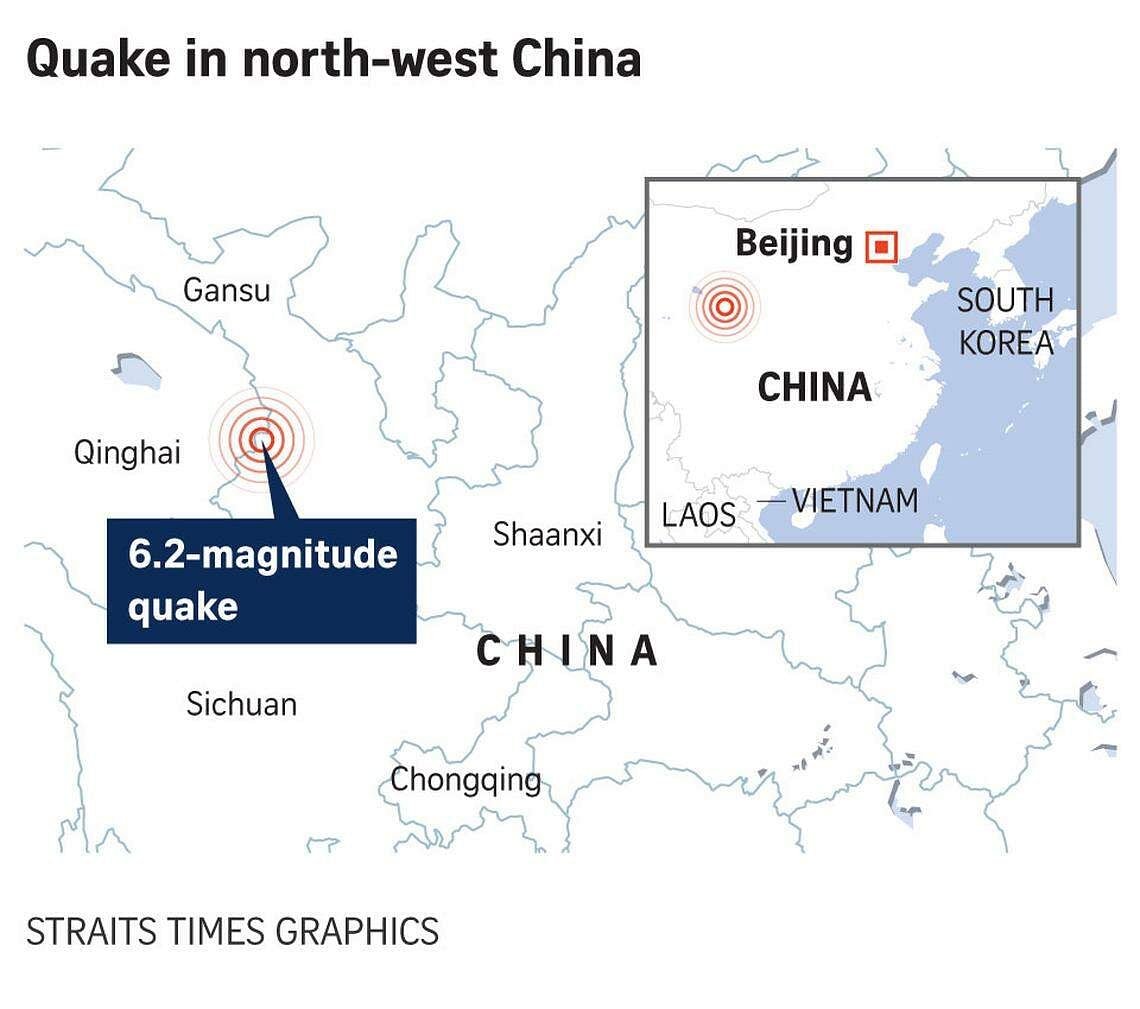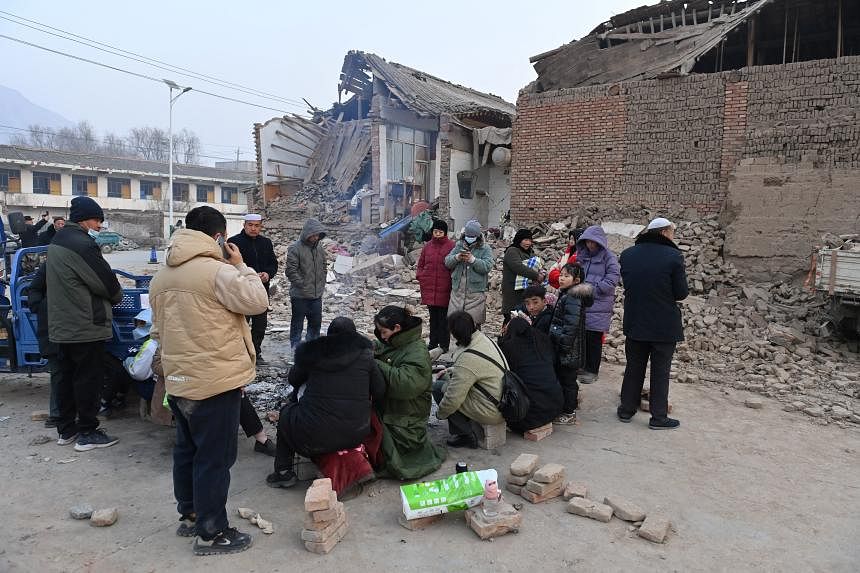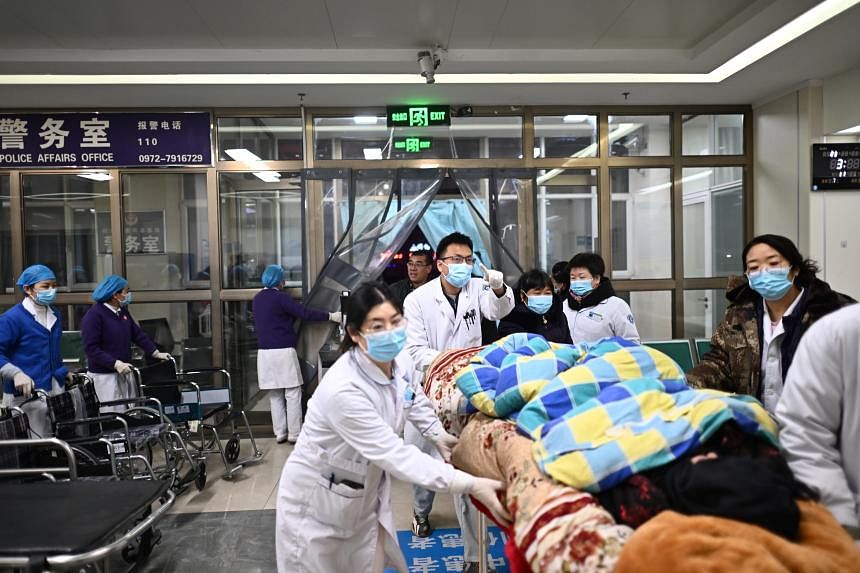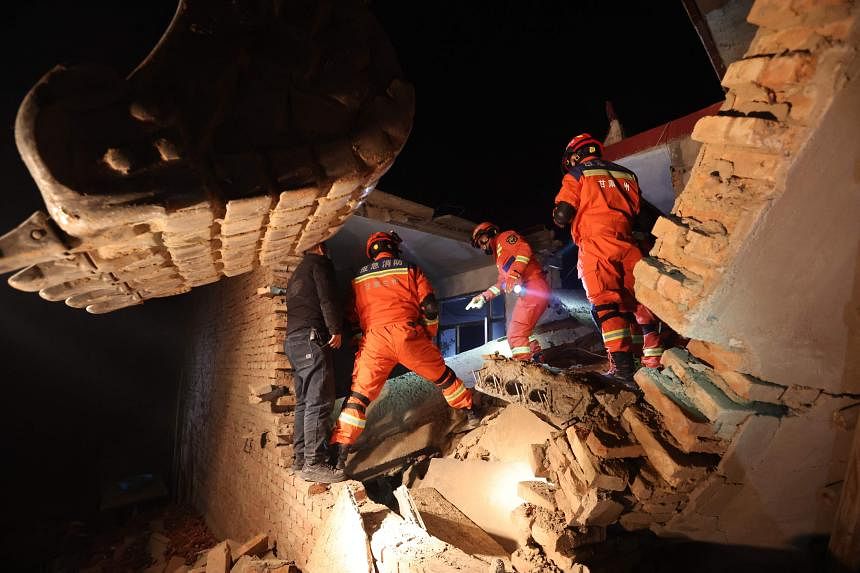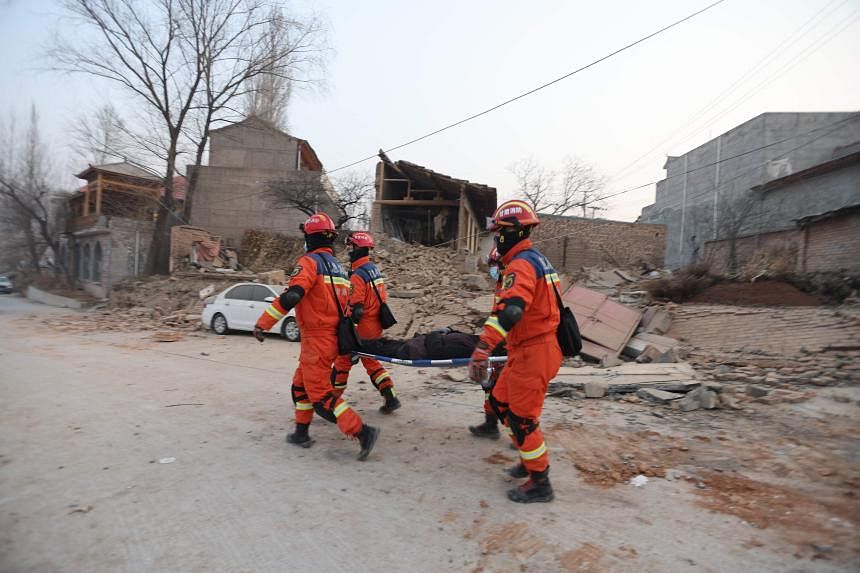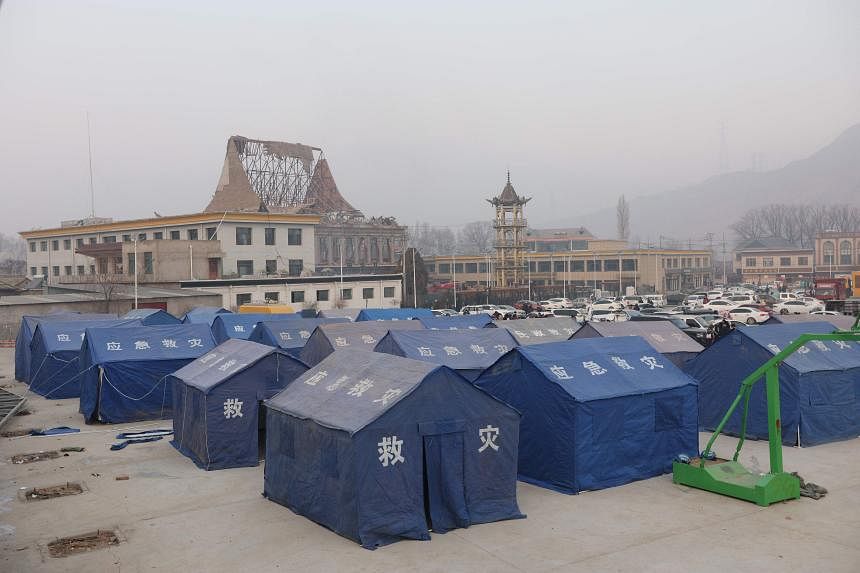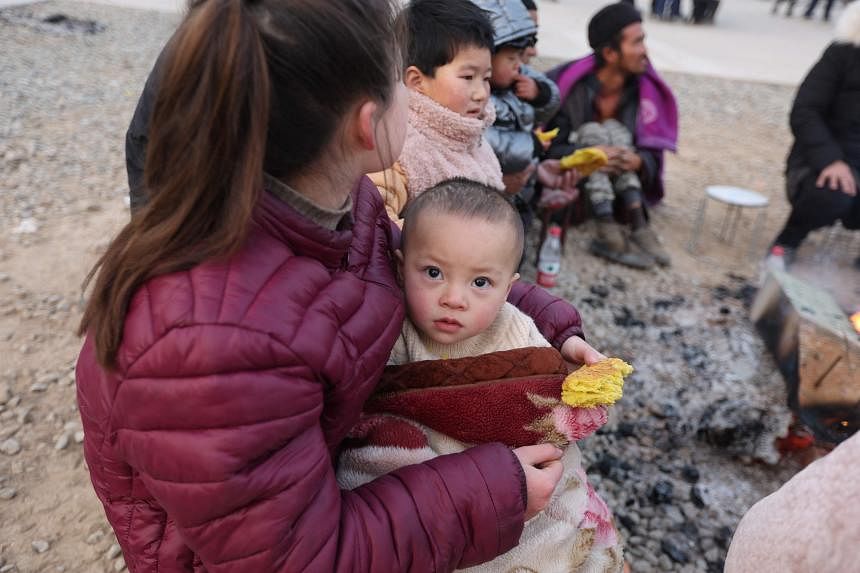BEIJING - An earthquake struck Gansu province in north-western China late at night on Dec 18, killing at least 131 people and injuring more than 710, in the country’s deadliest quake in years.
The 6.2-magnitude quake struck in Gansu’s Jishishan, a county with a population of 239,000 located near the border with Qinghai province. Tremors were felt as far as Xi’an in Shaanxi province, some 570km away.
Electricity, water, transport and communication were cut off in some areas, Chinese state media reported. Rescue work was made difficult by sub-zero temperatures, with roads covered in ice and snow, as well as the high altitude of the areas around the quake’s epicentre, which are nearly 3,000m above sea level.
A total of 155,393 homes in Gansu have been damaged or destroyed, said official updates on Dec 19 evening.
In Gansu, 113 fatalities have been reported so far, with 536 people injured; in Qinghai,18 have died and 198 are injured, with 16 people still missing, as of Dec 20 morning.
Mr Ma Zhongying, who lives in Dongjiagou village in Jishishan, said he was awakened by the quake and woke up his family of six.
“We rushed out of our house within seconds. Some family members had a few scrapes here and there amid the tumbling and shaking, but we are very lucky already, considering the damage that the earthquake has caused,” Mr Ma, the county representative of a Chinese logistics company, told The Straits Times over the phone.
He sent ST pictures showing the damage to his two-storey home: roof tiles had fallen off, and parts of the ceiling in his kitchen had also collapsed. There were cracks in the walls of his bedroom and the exterior of the house. A security video of his company warehouse he provided showed violent tremors occurring around midnight on Dec 18.
Videos and images of collapsed buildings, shaken residents and emergency rescue operations flooded Chinese social media right after the deadly tremors.
When the earthquake first hit at around midnight, people posted videos of home chandeliers and hanging light bulbs swinging wildly. Buildings were also shaking, as seen on videos on Douyin, the Chinese TikTok, as well as Kuaishou, another short-video streaming platform.
As the tremors intensified during the night, people were seen rushing down staircases and going out onto the streets to seek safety, amid the blasting of sirens. Some ran out of their homes covered only by their blankets. A visibly shocked Gansu resident, still in pyjamas and clutching a blanket outside her home, told local media: “The whole house was trembling and my hands and legs are still shaking from the fear. I don’t think I can sleep at all tonight.”
On social media, residents posted videos showing fallen ceilings and other collapsed structures. They also posted clips of rescue workers searching for survivors amid the debris and rescued residents warming themselves by fires. Temperatures have plummeted in the northern part of China amid a harsh winter, going as low as minus 16 deg C on Dec 19, when rescue work began.
On social media platform Weibo, posts about the Gansu earthquake have been read more than 190 million times, sparking 30,000 discussion threads.
Netizens prayed for the safety of those affected by the earthquake and shared pictures of rescue work and residents receiving supplies. Rescue workers also carried out survivors huddled in blankets amid collapsed buildings, with electricity cut off.
Emergency tents have also been set up to provide shelter from the cold, with videos of mothers cradling their young children on Dec 19 morning circulating on social media.
About 1,440 national firefighters were dispatched to the disaster area, with an additional 1,603 firefighters from Gansu and neighbouring provinces on standby. A military plane ferrying 14 tonnes of supplies, vehicles and rescue workers also landed in Gansu on Dec 19.
The Finance and Emergency Management ministries have released 200 million yuan (S$37.6 million) as disaster relief funds, with 150 million yuan going to Gansu and 50 million yuan to Qinghai.
Chinese media reported on Dec 19 night that Chinese Vice-Premier Zhang Guoqing was on his way to Gansu and Qinghai to direct rescue efforts.
Roads that were blocked due to landslides triggered by the earthquake have since been cleared, with electricity and communications also restored, Xinhua reported.
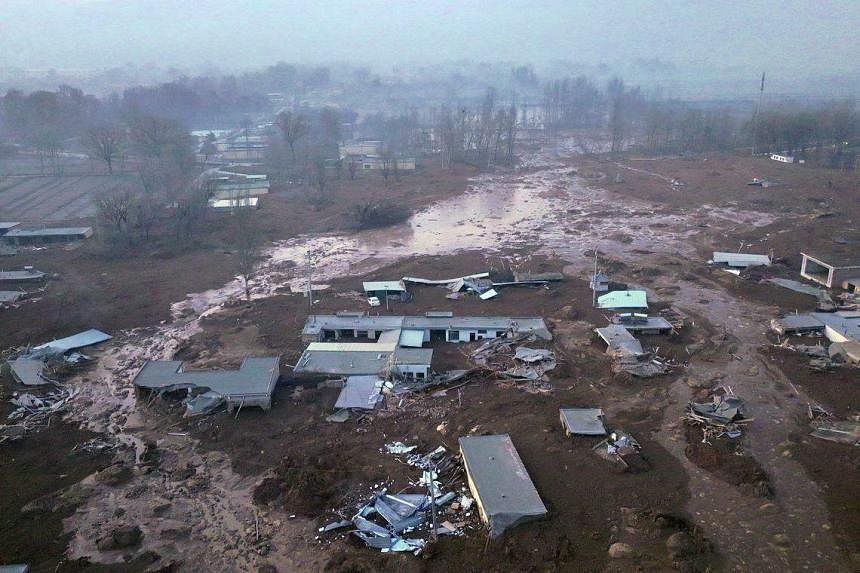
Investigations by the Ministry of Water Resources showed that more than 30 drinking water pipes were damaged, with irrigation channels collapsing. Officials in Qinghai and Gansu are organising emergency repairs of the water channels.
Medical emergency workers from hospitals in Beijing and Sichuan province were also deployed to Gansu.
The Gansu quake is believed to be the deadliest in China since 2014, when an earthquake in Yunnan, in south-western China, killed at least 600 people.
